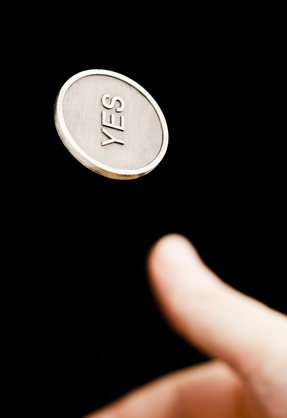 The Developing Intuition exercises that are presented in this and the next two posts will, if used regularly, help you to ‘tune in’ to the voice of your intuition. The more you use these exercises, the more you will be able to apply intuition to your daily life and thereby enhance the results that you are able to achieve as a magickian.
The Developing Intuition exercises that are presented in this and the next two posts will, if used regularly, help you to ‘tune in’ to the voice of your intuition. The more you use these exercises, the more you will be able to apply intuition to your daily life and thereby enhance the results that you are able to achieve as a magickian.
Although intuition is often referred to as ‘the voice within’ or the ‘sixth sense’, it is important to realise that your intuition can communicate with you in a number of ways. Many of you may experience ‘flashes’ of insight that take the form of pictures in your mind. Some of you will ‘hear’ words or messages within the mind. Still others among you will simply have a ‘feeling’ about to what your intuition is trying to tell you.
It is essential to note that all of these communication methods are valid and that it is not important how your intuition communicates with you. All that matters is that you are aware of that communication and that you begin listening to what it has to say.
>> Explore Intuition at Amazon <<
Developing Intuition Exercise #1
The Coin Technique
This is the simplest Developing Intuition exercise, but it is still amazingly effective. It has been designed to help you use your intuition when making decisions, and all you will need to begin is a coin and a firm idea of the decision that you need to make.
Begin by thinking about the decision that you are facing. This could be a major decision, such as whether or not you should accept a job that you have been offered, or it could be a minor decision, such as whether or not you should purchase a particular book or attend a certain social occasion.
Now take the coin in your hand and assign HEADS to mean YES and TAILS to mean NO. Concentrate once again on the decision that you have to make and ask a question relating to this decision out loud.
For example, if you are wondering whether to accept a job you have just been offered, you might ask, ‘Should I accept the job that I have just been offered?’
Having asked your question, toss the coin in the air and allow it to fall on the floor.
Now note which side of the coin is uppermost. If it is HEADS then the coin says that YES you should do what you asked. If it is TAILS then the coin says NO you shouldn’t do what you asked.
So far, so good. But what has all of this got to do with intuition?
Well, your intuition comes into play right now, as you ask yourself, ‘How do I feel about the way the coin landed?’
If you feel good about the way the coin landed, your intuition is telling you that the coin gave the right answer. If, however, you feel that you would have preferred the coin to have landed the other way up, your intuition is telling you that you should do the opposite of what the coin indicates.
In essence, the coin used in this exercise is nothing more than a tool that you use to arouse intuitive feelings. As soon as the coin has been tossed, your intuition will start reacting to the outcome of the coin. If your intuition agrees with the coin, you will feel happy about the outcome and you will be willing to make the decision swiftly. If, however, your intuition does not agree with the coin, you will feel uneasy and perhaps want to toss the coin a few more times.
It is vital that you remember one thing: Your intuition over-rules the coin! This means that, if the coin shows HEADS and you really wanted it to show TAILS, your intuition wins and whatever you associated with TAILS is the thing to do.
To begin with, use the coin technique when making small decisions. Then, when you have learned to ‘tune in’ to what your intuition says, bring the technique into play in more important matters (using your intuition in tandem with common sense, of course). Eventually, you will be able to dispense with the coin altogether, because you will hear your intuitive ‘voice’ loud and clear whenever an important decision needs to be made.

